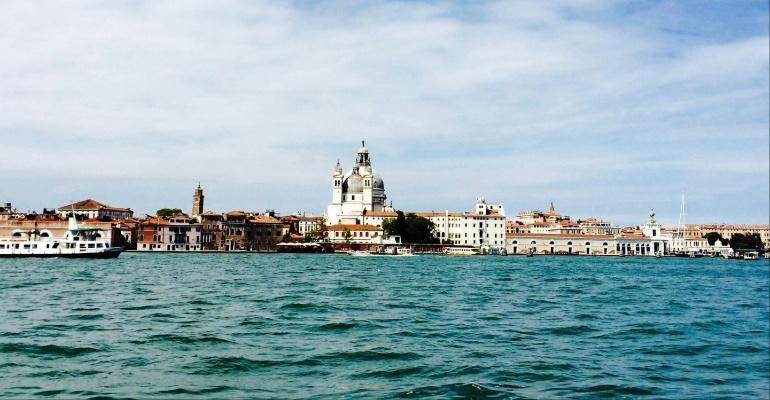Roberto Alberti, SVP & chief corporate officer at Costa Cruises said, ‘We have always been in favor of a development of the sector that respects the peculiarities of a unique city like Venice, finding alternative and practicable solutions to allow companies to continue to operate and feed an important ecosystem, of which many local companies are also part. The situation that is emerging, unfortunately, does not seem to be going in this direction.’
Two-phase strategy
With the law decree n. 103, in July 2021, Italy prohibited from August that year cruise ships over 25,000gt from transiting the Giudecca Canal and the San Marco basin. With the same decree plus additional commitments, a two-phase strategy to safeguard the future of Venice was agreed. The first phase meant a temporary solution with larger cruise ships berthing at commercial terminals in the Marghera port area, to be followed by a dedicated – although still temporary – cruise landing to be ready for 2022.
The second phase, for a structural and definitive solution, centered on finding an out-of-the Lagoon solution.
Today, larger ships entering Venice proceed via the Malamocco-Marghera Canal and berth at Marghera industrial port with passengers and luggage transferred to Stazione Marittima by rail or road.
Alberti continued, ‘Added to this is the failure to extend the concession to Venice Terminal Passeggeri (VTP), which raises serious doubts about the future of the company that manages the terminal and the cruise landing places, despite the efforts made by its shareholders in recent years. For this reason we hope that in a short time all the parties involved, starting with the companies and local and national authorities, can sit around a table and find a definitive solution.’
Cruise calls plunge
‘The commitments made by the Italian government in 2021 regarding alternative plans have so far not been respected or implemented,’ Pierfrancesco Vago, MSC Cruises’ executive chairman, told Italian media.
Cruise lines have not been summoned to collectively explore a solution, according to Vago. No serious alternative has been discussed and the result is a sharp reduction in passengers, from 1.5m to almost 500,000 based on recent data, with a significant impact on local businesses that rely on cruising.
Indications are that cruise lines are waiting for Italy to offer a stable prospect in the short term or they will have little option but to drop Venice from itineraries.
Risk of becoming permanent
‘Unfortunately, once again, a temporary situation risks becoming permanent and this penalizes the entire cruise tourism sector, a sector that always operates well in advance and with rigorous planning,’ said Francesco Galietti, director of CLIA Italy. ‘Acting without certainty of what the situation will be in the coming years puts the presence of cruises in Venice at risk.’
‘At the moment only two companies, amidst a thousand difficulties and with great economic, logistical and organizational effort, have decided to confirm their calls,’ continued Galietti. ‘But if the commitments are not respected it is not excluded that they will leave the city permanently. This would mean both losing Venice's status as a homeport, and a structural decline in cruise traffic and therefore tourism throughout the Adriatic, given that the Lagoon city has always represented a pole of attraction. The current uncertainty has led many shipowners to divert their ships to other ports and other countries.’
Copyright © 2024. All rights reserved. Seatrade, a trading name of Informa Markets (UK) Limited.
Add Seatrade Cruise News to your Google News feed.  |

